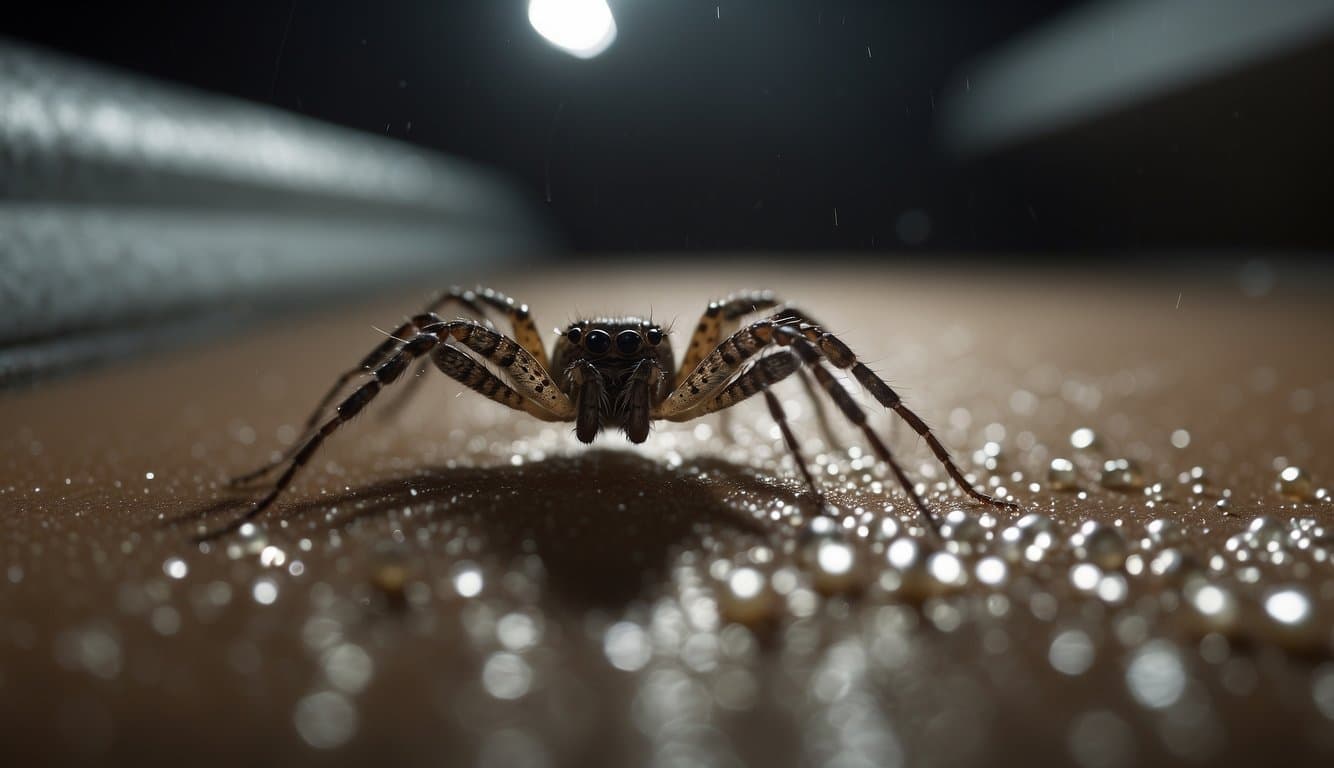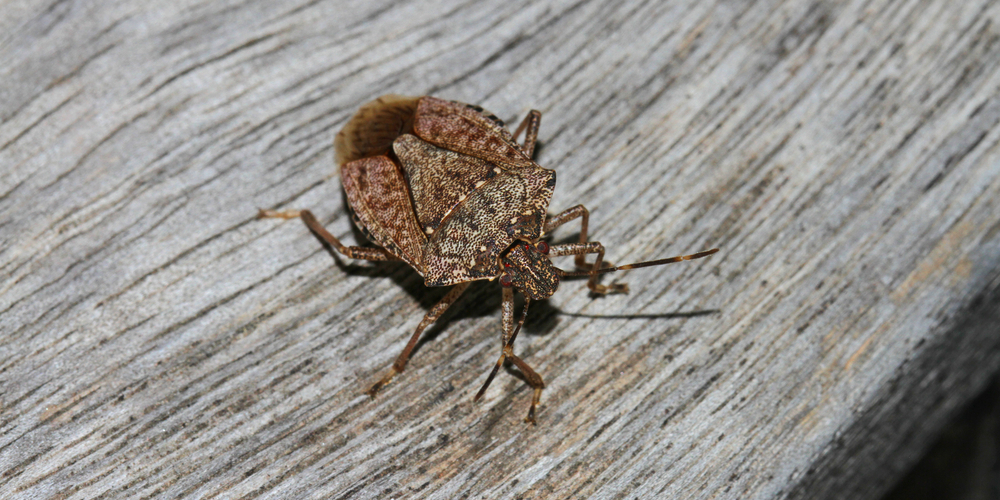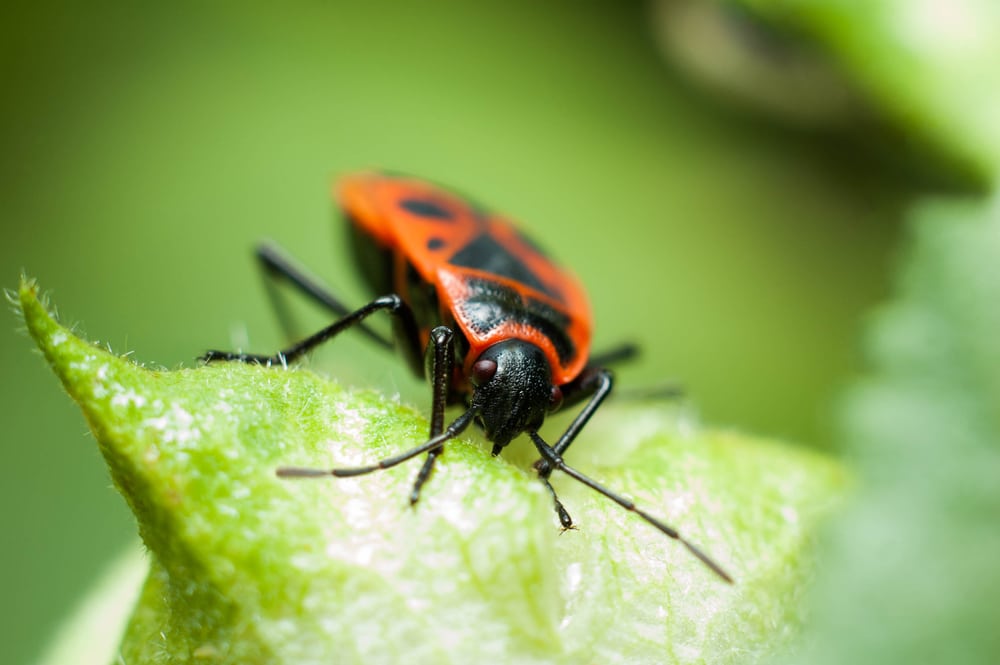Basements are often the least visited areas of a home, and they can become a sanctuary for various insects seeking shelter and food.
Your home’s lower level’s moisture, darkness, and temperature provide ideal conditions for a range of common basement bugs to thrive.
From the reclusive spider to the wood-loving termite, these uninvited guests make their presence known through the tell-tale signs they leave behind, such as webbing, damage to stored items, or even sightings during the occasional venture downstairs.

An encounter with basement insects can be unsettling and may signal the beginning of an infestation.
Identifying these pests is the first step in managing them.
The lineup of frequent basement dwellers includes silverfish that devour book bindings, centipedes scurrying across walls, and ants marching in search of sugary spills.
Being proactive in insect management is essential, as these pests are not only unsightly but can also contribute to potential health issues or structural damage.
Effective management starts with understanding what you’re up against and tailoring your approach accordingly—there’s no one-size-fits-all solution.
For example, it’s important to ensure your basement remains as inhospitable as possible to insects by reducing moisture, sealing entry points, and decluttering.
Simple steps like these can significantly deter pests and protect your home from the various issues that an insect presence in your basement can cause.
Identification and Behavior
Identifying the variety of bugs in your basement is key to taking the right course of action for management, while understanding their behavior helps in preventing future infestations.
Common Types of Basement Bugs
- Spiders: A frequent sight, ranging from harmless Cellar Spiders to venomous species like Black Widows.
- Centipedes and Millipedes: Many legs and quick movement, with House Centipedes commonly found in moist environments.
- Cockroaches: Including the Oriental Roach and others, recognized for their resilience and adaptability.
- Silverfish: Recognizable by their silvery scales and fish-like movements.
- Ants: In search of food or shelter, they can be a real nuisance.
- Crickets: Including Camel Crickets, known for their chirping and ability to jump.
- Earwigs: Easily identified by their pincers, they prefer dark and damp areas.
- Pillbugs and Sowbugs: Crustaceans that have adapted to live on land, often found in damp areas.
- Fruit Flies, Gnats, and Stink Bugs: Small but numerous, these pests can arrive in swarms and are attracted to moisture and decay.
Behavioral Patterns
- Food and Moisture Seeking: Most basement bugs, such as Oriental Roaches and Silverfish, are drawn to moisture and possible food sources in your basement.
- Nocturnal Activity: Many, like House Spiders and Cockroaches, are primarily active at night and spend daylight hours in hiding.
- Seasonal Behavior: Certain pests, including Stink Bugs and Fleas, may become more or less active depending on the season.
- Reproduction: Warm, undisturbed areas of your basement can serve as perfect breeding grounds for pests like Bed Bugs.
- Predatory Instincts: Spiders, particularly Brown Recluse Spiders, hunt other insects, which often leads them into basements.
- Hibernation and Migration: Some insects, like Water Bugs, may enter homes to escape outside conditions or for overwintering.
What Attracts Bugs to Your Basement, Anyway?
Basement pests find your lower level an ideal habitat due to certain alluring conditions. To minimize infestations, it’s pivotal to grasp what lures these critters into your space.
Impact of Humidity and Moisture
- Moisture-rich environments are prime real estate for pests:
- Elevated humidity levels increase the chances of having pests.
- Sources such as leaky pipes and inadequate proper ventilation contribute to damp conditions.
- Actions you can take:
- Use dehumidifiers to reduce high humidity.
- Fix any leaky pipes and ensure proper ventilation to manage moisture.
Importance of Shelter and Food Sources
- Shelter and food source availability seal the deal for basement dwellers:
- Pests are drawn to basements as they often provide undisturbed shelter.
- Debris and other materials can become a reliable food source for many pests.
- Prevention tactics:
- Keep your basement clutter-free to remove hiding spots.
- Regularly dispose of garbage and store food in sealed containers.
Consequences of Structural Weaknesses
- Your home’s weak spots invite unwanted guests:
- Foundation cracks and crevices act as doorways for pests seeking shelter.
- Even minor gaps around windows or doors can permit their entry into the darkness of your basement.
- Strengthen your defenses:
- Seal foundation cracks and crevices to prevent entry.
- Ensure all potential entry points are properly sealed off to maintain a pest-free basement.
Prevention and Control
Effective prevention and control strategies against common basement bugs are critical to maintaining a pest-free home. Below are specific measures focusing on environmental adjustments and utilizing both mechanical and chemical means to keep your basement bug-free.
Environmental Control Strategies
Your first line of defense in the war against basement invaders is to create an environment that is unwelcoming to pests:
- Maintain Low Humidity: Install a dehumidifier to decrease moisture levels—bugs thrive in damp conditions.
- Fix Leaky Pipes: Regularly inspect your plumbing and fix leaky pipes promptly to avoid water accumulation.
- Clean Up: Ensure your basement is clean; food remnants attract critters.
- Remove All Clutter: Create less hospitable hiding spots by keeping the area clutter-free.
Mechanical and Chemical Solutions
Once you’ve set the stage environmentally, employ these targeted tactics to deal with any intruders:
- Traps: Set up various traps such as sticky traps to catch crawlers wandering about.
- Seal Entry Points: Use materials like steel wool or caulking to seal entry points where bugs might enter.
- Food Storage: Store dry goods in airtight containers to discourage pests with a sealed-off food storage system.
- Pest Control: For persistent problems, consider hiring a pest control company. They may recommend treatments, such as bug bombs, which should be used cautiously and as a last resort.
Health Risks and Damage
When you inspect your basement, you’re often on the lookout for the usual clutter, but what about the pests that may be lurking out of sight? These unwelcome guests can pose direct health risks and cause significant damage to your property.
Health Concerns from Basement Pests
- Asthma and Allergies: Your basement can host pests like cockroaches and rodents, which are known to trigger asthma and allergies. Droppings and shed skin from these pests can contaminate your indoor air.
- Bacteria: The presence of rodents increases the risk of spreading bacteria that can lead to diseases. Their nesting materials and waste introduce harmful microorganisms into your living environment.
Structural and Property Damage
- Termite Infestation: Perhaps the most notorious of basement pests, termites, can silently eat away at the wooden structures in your home, compromising your home’s structural integrity.
- Rodent Activity:
- Mice and Rats: These critters can gnaw on electrical wiring, plastic bins, and even utility lines, leading to fire hazards or water damage.
- Pest Damage: Beyond this, the constant chewing by rodents can cause structural damage over time, further threatening the safety of your basement and your home.
Frequently Asked Questions
In addressing common concerns about basement bugs, this section provides tailored advice and factual insights for dealing with uninvited six-legged visitors.
What are the most frequent types of bugs found in basements?
- Cockroaches: Recognized for their long, dark brown bodies, they are often found in basements and are unwanted due to their disease-spreading potential.
- Spiders: Common for their web-building, these arachnids control other insect populations but can be alarming to find.
Check this guide on Common Basement Bugs And How To Deal With Them for more detailed information.
How can one effectively eliminate bugs in the basement area?
- Seal cracks and entry points to prevent bugs from entering.
- Maintain cleanliness to eliminate food sources and reduce hiding spots.
- Use dehumidifiers to lower moisture levels which attract bugs.
Are there specific bugs that are known to bite humans in basements?
Yes, certain bugs like:
- Fleas: Known for biting and causing discomfort and allergic reactions.
- Bedbugs: While not typically a basement bug, they can bite and cause itching if they infest areas like basement couches or beds.
What could be the cause of a high presence of bugs in my basement?
Factors include:
- High humidity: Many bugs are drawn to moist environments.
- Clutter and debris: Provides ideal nesting sites for critters.
Discover more reasons and solutions at Basement Insect Identification.
How can very tiny black bugs in basements be identified and managed?
- Identification: They could be anything from mold mites to pavement ants. Use a magnifying glass to observe physical traits.
- Management: Regular vacuuming and proper storage of food can help manage these tiny pests.
For a more detailed identification guide, refer to advice provided on How to Identify and Deal With Basement Bugs.
What are the most effective treatments for bug infestations in basements?
Effective treatments include:
- Insecticides: Use targeted treatments for the specific bugs present.
- Natural remedies: Consider diatomaceous earth or essential oils for a less chemical approach.

